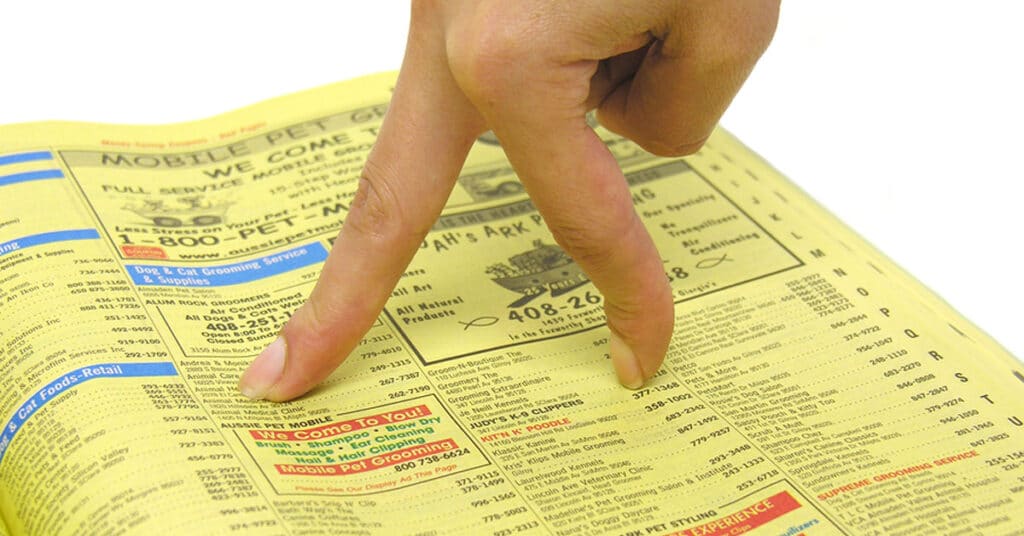There is a famous quote from John Wanamaker:
“Half the money I spend on advertising is wasted; the trouble is, I don’t know which half.”
Wanamaker sent us on a quest to determine “what is working.” It is a worthy quest.
Enter the Yellow Pages. They figured how to twist the Wanamaker Question to their own advantage. “Put a different phone number in your Yellow Pages ad and when people call that number – BOOM – you know the ad is working.” Brilliant – for the Yellow Pages. Here is what those yellow demons knew: that it would make them look good.

Think back to the days of the Yellow Pages, when there was no internet. Did you ever do this?
“What was the name of that HVAC company again? It was Joe something.” You grab the Yellow Pages, flip to Heating and Air Conditioning, and there it is – Joe and Sons Heating and Air. You then dial the magic Wanamaker number and BOOM – the little yellow demon rings the lead generation bell – Ding, Ding, Ding, “I got you a lead! Aren’t I wonderful? Reward me! I win the Wanamaker Trophy.” (I know, I know, the Wanamaker Trophy is a golf trophy, but I couldn’t resist.)
What the data is telling you is that the Yellow Pages was the LAST point of contact. What the Yellow Pages wanted you to believe is that it was the ONLY point of contact, the only influence on your customer, the only advertising that is “working.”
But here is the real question: What made the customer think of Joe in the first place? What drove the customer to the Yellow Pages?
The phone call is often the last touch even today with with cell phones.
The last touch data does not answer that question. The data tells us only the phone number they called. It does not tell us who generated that lead. But it sure made the Yellow Pages look good, didn’t it? And that is what the Yellow Pages wanted.
The next evil genius to capitalize on our misunderstanding of how advertising really works was the phone company.
“Sure, we can sell you 80 phone numbers so that you can the track the calls from all your different lead sources. Just pay the bill.” Enough said.
Then the technology geeks realized they could create software to help you answer the Wanamaker question. “Hey, guys! We can track all 80 phone numbers and put it in a report. That way you’ll know what ads are working!”
But you don’t know what ads are working. All you know is the last point of contact.
Here’s an example: “Just put a different phone number in your radio ads and you’ll be able to track your leads from radio.” But does the customer remember the phone number from your radio ad, or do they just remember your name and why they like you and then go online to get your number?
These are the questions your software doesn’t answer: Did calls from your website phone number begin to rise after you started advertising on the radio? Did the traffic to your website begin to rise after you started advertising on the radio?
Listen to the whole story your last touch data is trying to tell you.
Different ads get the attention of different customers, and different ads persuade different customers. So we create lots of different ads because your customers have lots of different buying motives. And the relentless repetition of radio deepens the memory of your name.
But the Last Point of Contact – the Last Touch – gets all the credit.
The eternal quest to answer the Wanamaker Question, “Which of my ads is working?” is a worthy quest. But it’s not as easy to answer as you might think.
Finding that answer requires wisdom, not eighty (80) different phone numbers.


